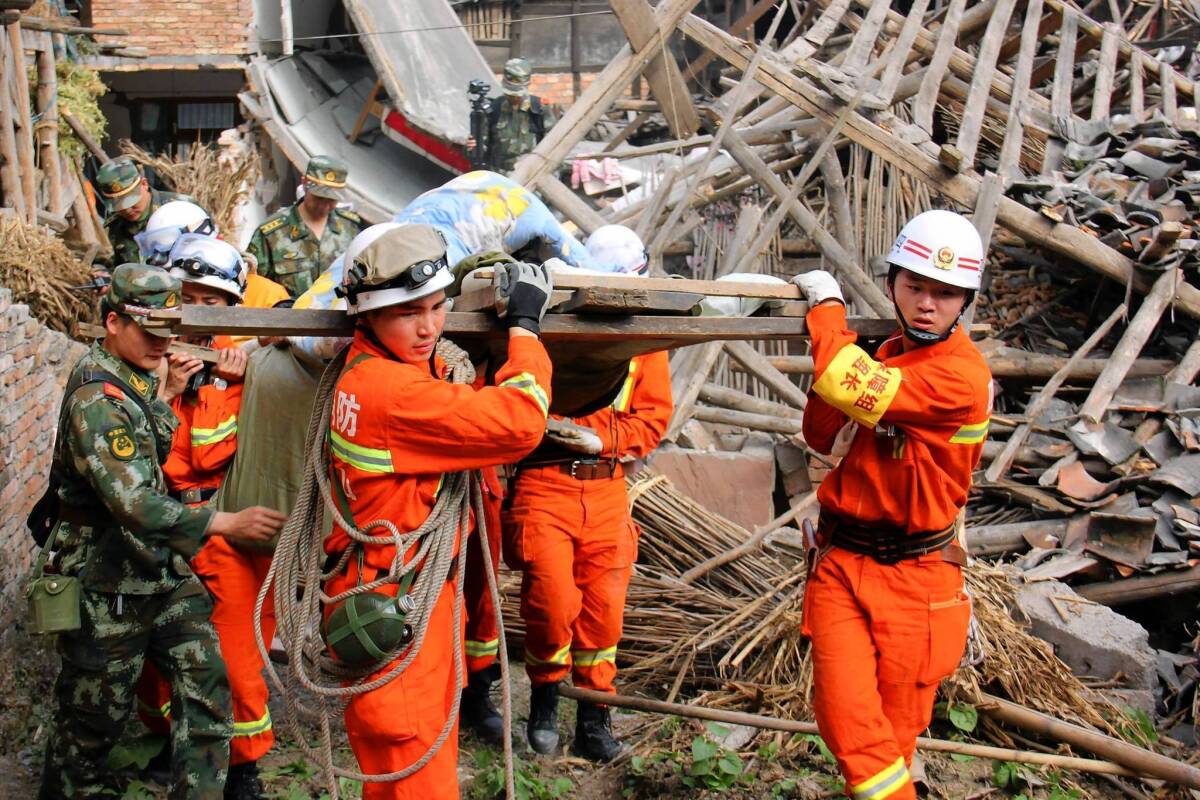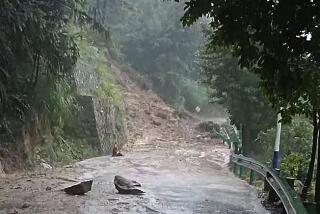China quake kills at least 179

BEIJING — When their beds began to shake and the dishes clattered off the shelves, people knew what to do this time.
The temblor Saturday morning in Sichuan province was a lesser replay of a killer quake that struck along the same fault line almost five years ago. Still, it was severe enough to leave at least 179 dead and more than 8,000 injured by Sunday, Chinese authorities reported.
The 8 a.m. jolt roused residents from their beds, and many people ran into the streets in their pajamas, according to reports from the scene.
“We were very calm. We have gained experience from the last earthquake,” one middle-aged man told Chinese media. “It took us 30 seconds to leave everything and run.”
Chinese officials assessed the magnitude of the quake at 7.0; the U.S. Geological Survey reported it at 6.6.
Residents immediately thought back to May 12, 2008 — which Chinese simply refer to as 5/12, similar to Americans talking about 9/11 — the day a magnitude 7.9 quake left about 90,000 people dead or missing, including many children crushed by collapsing schools.
The 2008 disaster left residents and government officials better prepared, said Meimei Leung, emergency response director for World Vision’s China office.
“This time people knew what to do. As soon as the tremors started, they went out into open areas. The government also is working in a well-organized manner,” she said.
The epicenter of Saturday’s earthquake was about 80 miles southwest of the provincial capital, Chengdu, in Lushan county near the city of Yaan, best-known for its panda-breeding research center, which reportedly did not suffer serious damage.
“Comparatively speaking, the scale of the disaster is not as extensive as in 2008, although there are still multiple locations affected,” Leung said.
Much of the housing was damaged in Yaan, a city of 1.5 million, and many residents were planning to spend the night in public squares.
“Our apartment on the fifth floor of a six-story building is not livable anymore. All the walls have cracks in them, and they can’t even open the door to get into the apartment. And the water pipes of the building also broke,” Bai Yuelin, 27, a technician in Yaan, said in a telephone interview. “I really worry because the temperature drops at night.”
A 22-year-old woman despaired that her house had survived the first earthquake but not this one.
“When the May 12 earthquake happened, I thought I was lucky.... I still had a home to go back to,” she wrote in an Internet posting. “Now our house can’t be lived in anymore. I feel really lost. Where I should go? What I should do after all this?”
Officials warned of aftershocks and potential secondary disasters, such as landslides or road and cave collapses, especially as a light rain was falling.
Jiang Haikun, an official with the China Earthquake Network Center, told the official New China News Agency that the quake was in the same Longmen Shan fault zone as the 2008 quake, centered about 110 miles away in Wenchuan.
Authorities warned the death toll could climb significantly as reports filter in from more remote villages. Communications were still down late Saturday in many areas, and roads were impassible.
The rescue effort will be a test for the newly installed government of Xi Jinping, who took over as president in March. His premier, Li Keqiang, toured the earthquake-stricken area Saturday.
“The current, most urgent issue is grasping the first 24 hours after the quake’s occurrence, the golden time for saving lives, to take scientific rescue measures,” Li was quoted as telling state media.
Nearly 8,000 People’s Liberation Army soldiers were deployed to the earthquake zone. Authorities reported that a military vehicle carrying 17 soldiers slid off a cliff into a river, killing one soldier and seriously injuring three.
Tommy Yang of The Times’ Beijing bureau contributed to this report.
More to Read
Sign up for Essential California
The most important California stories and recommendations in your inbox every morning.
You may occasionally receive promotional content from the Los Angeles Times.










